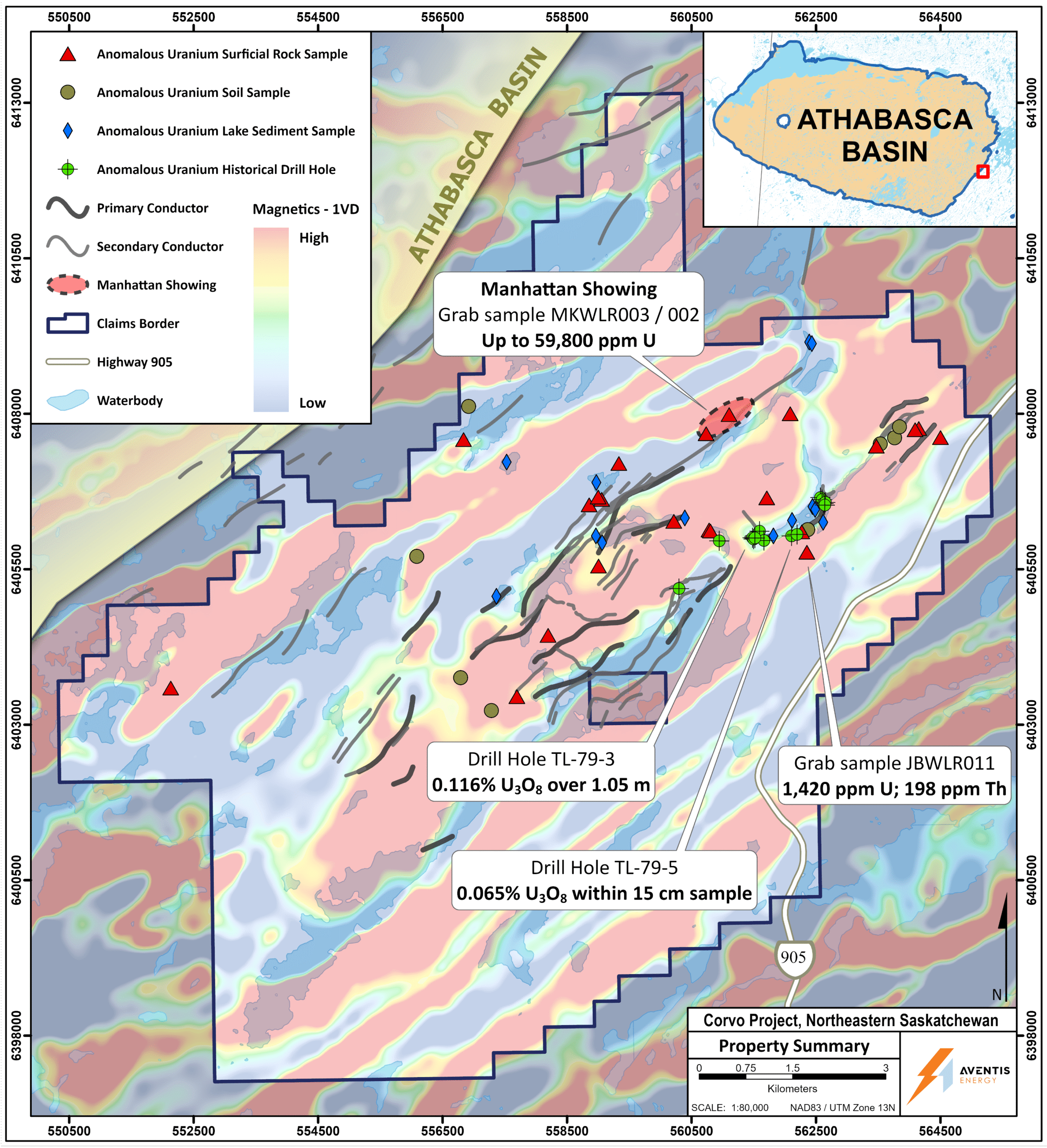
CORVO URANIUM PROJECT
PROJECT
OVERVIEW
Aventis Option to Acquire 75% - Standard Uranium 25%
The Corvo project is road accessible and lies beyond the eastern margin of the Athabasca Basin, consisting of 13 mineral dispositions totaling 12,265 hectares.
Located just outside the current margin of the Athabasca Basin, Corvo boasts shallow drill targets with bedrock under minimal cover of glacial till.
The project was recently expanded to cover 29.3 km of prospective strike length along three northeast trending magnetic low/electromagnetic (EM) conductor corridors.
Multiple outcrop showings of mineralized veins and fractures are present on the Project, notably the Manhattan Showing that returned historical sample results up to 59,800 ppm U at surface and has never been drill tested.
Aventis believes the Corvo Project is highly prospective for the discovery of shallow, high-grade basement-hosted uranium mineralization akin to the Rabbit Lake deposit and the recently discovered Gemini Mineralized Zone (“GMZ”).

CORVO URANIUM PROJECT
PREVIOUS WORK
- Uranium mineralization is present along a strike length of 800 metres in historical drill holes TL-79-3 (0.057% U3O8 over 3.5 m) to TL-79-5 (0.065% U3O8 over 0.1 m).
- Historical airborne and ground electromagnetic work identified a broad, northeast-southwest trending, conductive system that is approximately 2.5-km wide with prospective targets associated with magnetic-low corridors and cross-cutting faults.
- A modern high-resolution time domain electromagnetic (“TDEM”) survey was recently completed, upgrading drill targets through definition of the main conductor trends associated with uranium mineralization.
- Prospecting, mapping, geochemical surveying, and drilling completed in the late 1970s and 80s identified graphitic metasedimentary rocks in outcrop along the conductive corridor and led to the discovery of multiple uraniferous outcrops including SMDI showing 2052 (0.137% U3O8 and 2,300 ppm Th).
Recent expansion of the Project adds multiple new data points of uranium anomalism in the south, including surface sample JBWLR011, returning 1,420 ppm U.
CORVO URANIUM PROJECT
GEOLOGY
Ten drill holes were completed between 1978 and 1979, all of which were designed to test strong conductors. All drill holes intersected graphitic metasedimentary rocks – the ideal host rock for uranium mineralization.
Analytical data from the Manhattan showing returned 1.19 to 5.98 wt.% U3O8, as well as elevated Th, Pb, and REEs, while the pegmatite outcrop returned 279 ppm U and elevated REEs (1.29 wt.% total REE).
Lakebed geochemical anomalies returned 100 to 170 ppm U3O8 for T-Lake and 20 to 60 ppm U3O8 for Hook Lake, both of which are associated with anomalous pathfinder elements Ni, Cu, Pb, Co, and Mo.
- These significant surficial uranium occurrences on the Corvo Project, coupled with elevated radioactivity in drill core and lakebed geochemical anomalies, support the exploration model for shallow, high-grade, basement-hosted uranium mineralization, akin to the recently discovered Gemini Mineralized Zone located 45 km southwest of the property.




